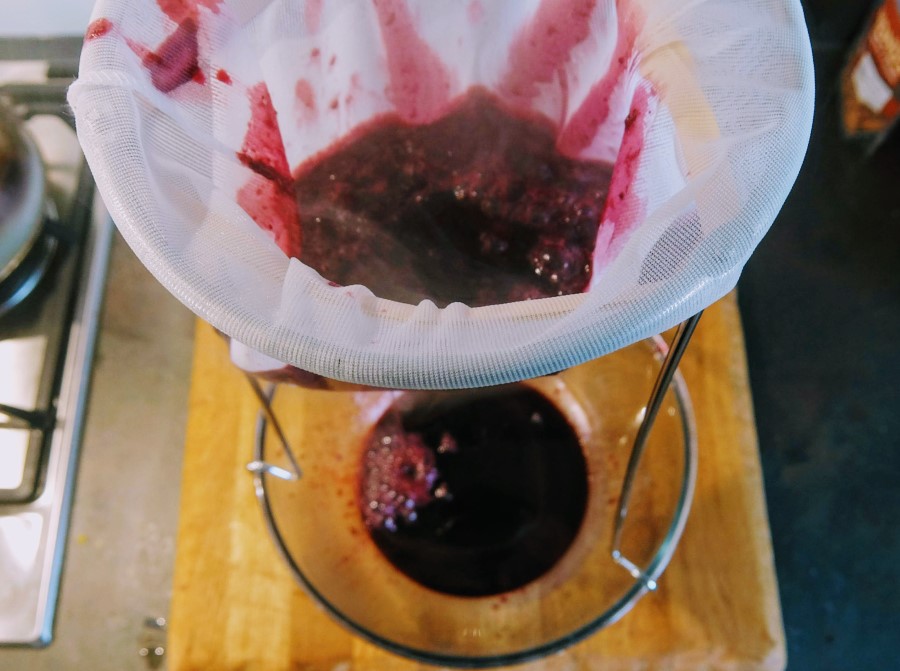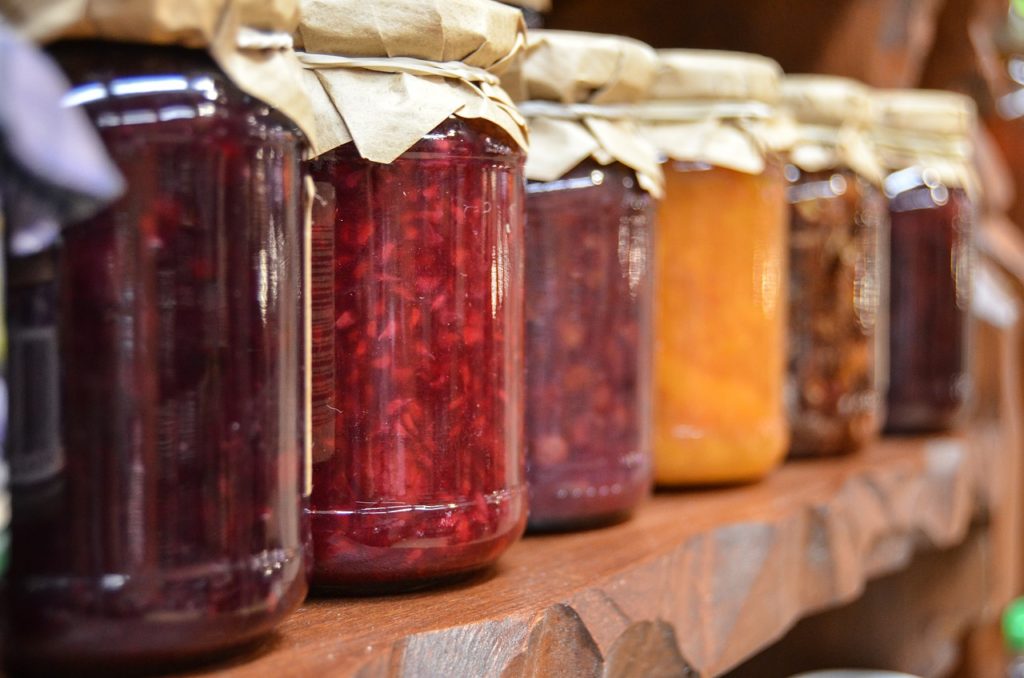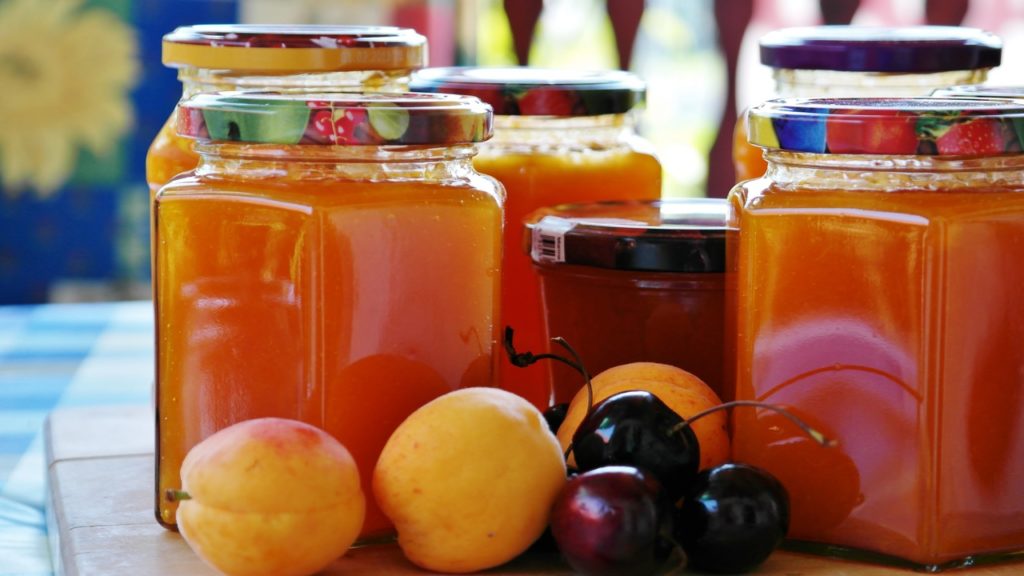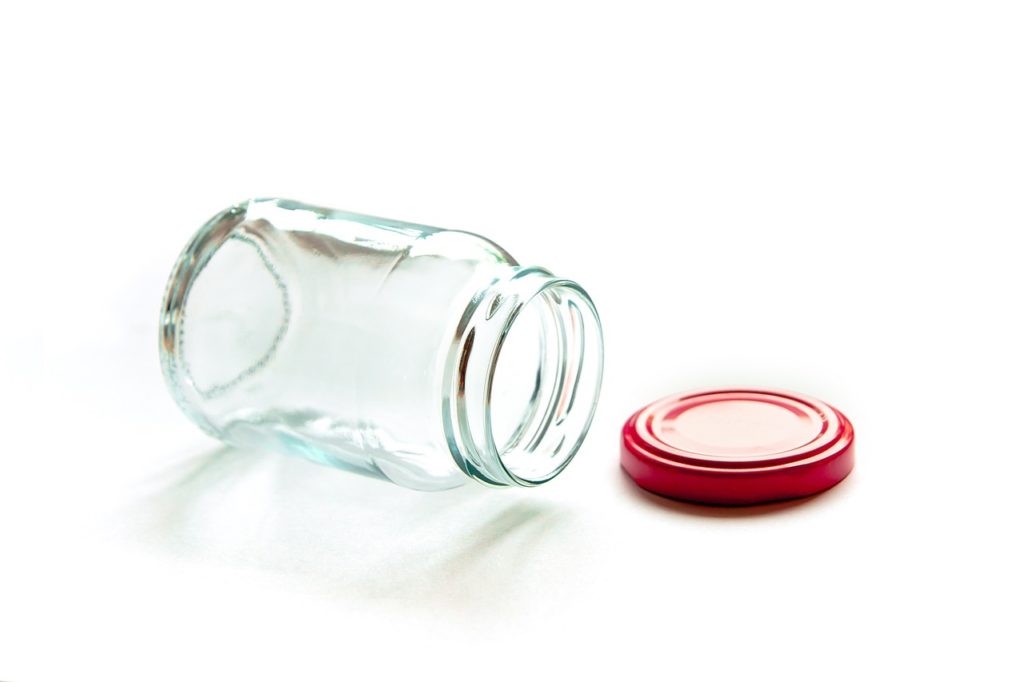Jelly straining bags are an essential piece of kit in the preservers’ arsenal. The texture is everything when it comes to foods, sometimes you want texture, sometimes you want smoothness. A jelly bag makes all difference between a jam and a jelly so learning how to use one opens up a lot of opportunities for making silky smooth preserves.
Table of Contents
Straining The Difference Between Jam And Jelly
Jams contain all the fruit and jellies are smooth as they contain only the juice of the fruit. The result is that jellies will yield less than jams but the end result is very different.
Both jams and jellies set in the same way, using pectin, sugar and acid to form a gel, however, sometimes you do not want the skins or added texture that some fruits have.
How To Get Fruit Ready For Straining
Most jelly recipes follow certain steps. The key part of it is extracting the juice of the fruit you are using and this is usually done by heating the fruit in a small amount of water.
The fruit is added to a preserving pan with a few tablespoons of water and heated gently. The gentle heat starts to break down the fruit and the juices will start to flow freely. After 10 – 15 minutes of heating most fruits will have broken down enough to start
This is where the jelly straining bag comes in. The fruit and juice can be ladled into the straining bag and left to drip through (no agitating or stirring) for anywhere from an hour or two right up to overnight.

Once the juice has been seperated, sugar is added to the juice and the juice and sugar are boiled again to reduce down, hit the setting point and gel the jelly.
Pretty much every jelly recipe you will find will have details on how long to heat your fruit and how long to strain for so check a recipe for details.
Getting Rid Of The Pips
The biggest advantage of using a jelly straining bag is to remove the dreaded pips. I remember as a child having raspberry jam which would. of course, be full of pips. It still tasted great but I remember asking my nan to make it without pips. She made raspberry jelly the next year and I couldn’t get enough of it.
Beautifully Clear Jellies
Using a jelly straining bag can make quite beautiful jellies because they can turn out clear, especially if you use light coloured fruits. Apple jelly, for example, is a lovely white wine colour with great clarity.
Making clear jellies like this is easy with a jelly bag, it is all about patience and straining the fruit without any pressure or agitating. Leaving the fruit to strain sometime overnight just using gravity will create a clear jelly.
What You Get When Buying A Jelly Straining Bag
Most jelly bags on the market consist of a stand and the straining bag that sits in the stand. The stand will usually sit on top of a bowl or pan and the fruit is added to the straining bag which then runs or drips straight into the bowl beneath.
This combination might not sound like much but jelly straining bags are pretty inexpensive and will last a long time. Most models have replaceable straining bags so they can be replaced when the original gets a little tired. The other option is to make your own.
Making Your Own Jelly Bag
Single-use jelly bags can be easily made using a few layers cheesecloth. Whilst it is not as easy to strain jelly this way it is great if you don’t make jelly that often.
To create your home made straining bag place two to three layers of cheesecloth in a bowl so that the edges overlap. Ladle in the heated fruit and juice from the preserving pan and gather the corners of the cheesecloth to form a sling holding the fruit inside. Secure the corners together and suspend over the bowl to allow to strain.
Some people hang the fruit from a kitchen door handle above the work surface or between the legs of an upturned stool. The idea is to keep the jelly bag suspended and undisturbed whilst the fruit and juice is straining.
What Happens Once The Fruit Has Been Strained?
After straining your fruit through the jelly bag you will be left with a bowl of juice and the fruit pulp left in the jelly straining bag.
The process now is just like making jam except you are using just the juice and not the fruit pulp. The process usually follows like this, check your jelly recipe for specifics:
The strained fruit juice is combined with an equal amount of sugar in a preserving pan.
The juice and sugar
The jelly is then ladled or funneled into sterilised jars and sealed.
Is It Worth Buying A Jelly Bag
As you can see the process of making a jelly is really simple. A jelly bag is pretty inexpensive and the end result is delicious and really looks great so I would say it is definitely worth getting a jelly bag.
Try making a jelly for yourself and you will be hooked.






Can you do anything with the leftover fruit pulp or is it just waste since all the juices have been removed?
Personally, I compost it. The juice and sugars have mostly gone into the jelly so you are left with the skins and fibre.
There will still be some flavour so you could use it if you wanted to but I don’t bother.